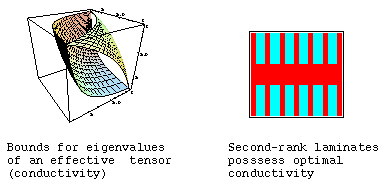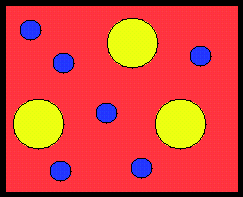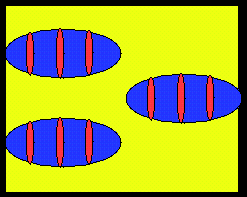
Mathematically, the problem of bounds and of extremal structures can be formulated as a nonconvex variational problem of minimization of the sum of energies/complimentary energies that a structure stores under different loadings.
We have now a pretty detailed picture of structures of two-phase conducting and elastic materials, but the best structures of multiphase composites are mainly unknown.
Multiphase mixtures
The optimal microstructures of multicomponent mixtures are mostly unknown, altough several problems are already solved. The structural variety and the difficulty of the problems are significantly higher then of the two-materials mixtures.
Jumping from two-material structures to multimaterial is like passing from plane to three-dimensional world or passing from black-and-white to color TV.
The next pictures show the variety of the topology of optimal isotropic
conducting two-dimensional three materials structure. Note the optimal
topology of two-material mixtures us pretty clear: "good" material outside,
"bad" material inside inclusions. In contrast, the optimal topology of
three-component mixtures depend on their volume fractions.

